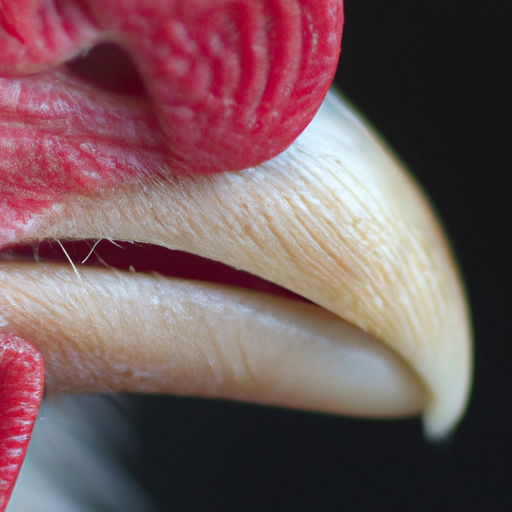Chickens are social creatures with a natural pecking order, but sometimes disputes can arise. In this article, we will explore various strategies that can be implemented to prevent pecking order disputes among chickens. From providing ample space and resources to implementing effective management techniques, we will discuss practical solutions to ensure a harmonious and stress-free environment for our feathered friends. So, whether you’re a seasoned chicken keeper or just starting out, join us as we discover the secrets to maintaining a peaceful pecking order among chickens.
Understanding the Pecking Order
Definition of the pecking order
The pecking order refers to the hierarchical system of dominance and submission in a chicken flock. It is a natural behavior that determines the social structure within the group. Chickens establish this order through pecking, chasing, and other forms of aggressive behavior. The pecking order determines which chickens have priority access to resources such as food, water, and preferred roosting spots.
Importance of the pecking order in a chicken flock
Understanding the pecking order is crucial for maintaining a harmonious and well-functioning chicken flock. It helps prevent conflicts and reduce stress among the chickens. By establishing a clear hierarchy, the pecking order reduces aggressive behaviors and minimizes the risk of injury. Additionally, having a stable pecking order allows the chickens to establish routines and a sense of security within the flock.
Creating a Suitable Environment
Providing enough space for chickens
One of the key factors in preventing pecking order disputes is ensuring that there is enough space for all the chickens in the coop and run. Overcrowding can lead to increased aggression and competition for resources. The general guideline is to provide at least four square feet of indoor space and ten square feet of outdoor space per chicken. By having ample space, each chicken can establish their own territory and have enough room to move around comfortably.
Ensuring adequate access to food and water
To avoid unnecessary conflicts, it’s important to provide sufficient food and water sources for all the chickens. Make sure there are multiple feeding and watering stations in the coop and run, spaced far enough apart to prevent crowding. This allows the more dominant chickens to eat and drink without being constantly interrupted or chased away by others.
Establishing multiple feeding and watering stations
Having multiple feeding and watering stations helps ensure that all the chickens have equal opportunities to access food and water. This reduces the chances of lower-ranking chickens being denied essential resources by the more dominant ones. Additionally, it can help to spread out treats and feed across the area, encouraging the chickens to forage and reducing competition during feeding times.
Providing hiding spots and roosting areas
Creating hiding spots and roosting areas within the coop and run can also help prevent pecking order disputes. Dominant chickens may assert their dominance by chasing or pecking at lower-ranking ones. By providing various hiding spots such as shrubs, boxes, or elevated perches, submissive chickens have places to retreat and feel safe. Having multiple roosting areas at different heights can also distribute the flock more evenly, reducing conflicts over preferred roosting spots.
Introducing New Birds Gradually
Quarantine and observation period for new birds
When introducing new birds into an existing flock, it’s important to quarantine them for a period of time before allowing direct contact with the rest of the flock. This quarantine period helps ensure that the new birds are healthy and free from any diseases or parasites that could harm the established flock. During this time, observe the new birds for any signs of illness or aggression. This allows you to address any issues before introducing them to the rest of the flock.
Introducing new birds through a wire mesh barrier
To minimize the potential for aggression when introducing new birds, use a wire mesh barrier to create a visual but physically separated space within the coop or run. This allows the birds to see and get used to each other without direct contact. The barrier should be large enough to provide adequate space for the birds to move around. This gradual introduction helps the existing flock become familiar with the presence of the newcomers, reducing the chances of aggression when they are finally integrated.
Gradual integration into the flock
After the observation period and initial introduction through a mesh barrier, gradually integrate the new birds into the existing flock. This is best done when all the chickens are calm and in a non-competitive environment, such as during the evening when they are settling down to roost. Allow supervised interactions for short periods, gradually increasing the duration over time. This gradual integration allows the chickens to establish the new pecking order with minimal aggression and stress.
Avoiding Overcrowding
Determining appropriate flock size for available space
To prevent overcrowding, it’s essential to determine the appropriate flock size based on the available coop and run space. As mentioned earlier, providing at least four square feet of indoor space and ten square feet of outdoor space per chicken is a general guideline. However, it’s important to consider the specific layout and design of the coop and run, as well as the individual needs and behavior of the chicken breeds you are raising.
Preventing overcrowding in coops and runs
Maintaining appropriate flock size is crucial for preventing overcrowding within the coop and run. Overcrowding can lead to increased stress, aggression, and pecking order disputes. Regularly assess the number of chickens and the available space to ensure it remains balanced. If overcrowding becomes an issue, consider expanding the coop or run, or reducing the flock size by rehoming some chickens.
Separating aggressive or bullied birds
In some cases, certain chickens may display consistently aggressive behavior or become targets of constant bullying within the flock. If this occurs, it’s important to address it promptly to prevent further harm or distress. Separating the aggressive or bullied birds from the rest of the flock temporarily allows them to heal, recover, or regain their confidence. Providing a separate space with food, water, and shelter helps ensure their well-being while you address the underlying causes of the aggression.
Providing Distractions and Enrichment
Providing a diverse range of foraging opportunities
One effective way to prevent pecking order disputes is by providing a diverse range of foraging opportunities for the chickens. This encourages natural behavior and reduces competition for resources. Scatter food or treats in different areas of the run, hiding them in grass, leaves, or wood shavings. This stimulates the chickens’ instinct to search for food and keeps them occupied, reducing the likelihood of aggressive behaviors towards one another.
Using chicken toys or treat balls
Chicken toys and treat balls are another excellent way to keep your flock entertained and decrease aggression. These toys are designed to challenge the chickens’ problem-solving skills and provide mental stimulation. Fill treat balls with small treats or scraps and allow the chickens to peck at them, encouraging both physical activity and mental engagement.
Providing perches and things to peck at
Offering perches at different heights and providing things for the chickens to peck at can help reduce aggression. Perches give the chickens a place to rest and retreat, away from potential bullies. They also promote muscle development and balance. Additionally, providing objects such as cabbage heads or hanging piñatas filled with nutritious treats gives the chickens something to focus on, diverting their attention away from potential conflicts.
Offering environmental enrichment such as hay bales or hanging treats
Environmental enrichment plays a crucial role in preventing boredom and aggression among chickens. Hay bales, branches, or natural materials can be placed in the run to provide opportunities for scratching, pecking, and exploring. Hanging treats like corn cobs or leafy greens can also keep the chickens occupied and provide additional sources of nutrition. These enrichments not only prevent pecking order disputes but also contribute to the overall welfare and happiness of the flock.
Maintaining a Balanced Diet
Using nutritionally balanced chicken feed
Maintaining a balanced diet is essential for the overall health and well-being of the chickens, which in turn helps prevent aggression and pecking order disputes. Provide a high-quality, commercially formulated chicken feed that meets the nutritional needs of your specific flock. Avoid feeding excessive amounts of treats or scraps, as this can disrupt the nutritional balance and contribute to aggression.
Avoiding excessive protein or nutrient imbalances
While providing a balanced diet is crucial, it’s important to also avoid excessive protein or nutrient imbalances in the chickens’ diet. Excessive protein can lead to increased aggression, as it can heighten the chickens’ natural instincts for competition and dominance. Ensure that the chicken feed is formulated specifically for the age and type of chickens you are raising, to avoid nutrient imbalances that may affect their behavior and overall health.
Supplementing with greens, vegetables, and calcium sources
In addition to the main chicken feed, supplementing the diet with fresh greens, vegetables, and calcium sources can help support the chickens’ overall health and reduce aggression. Greens such as lettuce, kale, or spinach provide essential nutrients and act as natural stress relievers. Vegetables like cucumbers, tomatoes, or zucchinis can be given as healthy treats. Calcium sources like crushed eggshells or oyster shells support strong eggshell production and can minimize pecking behavior associated with calcium deficiencies.
Ensuring Adequate Lighting
Providing appropriate lighting duration
Lighting plays a crucial role in maintaining a healthy and balanced environment for the chicken flock. Ensure that there is an appropriate duration of light provided to the chickens each day. The general recommendation is to provide 14-16 hours of light during the laying period to encourage egg production. Adjust the lighting duration gradually to mimic natural daylight patterns and transition them into the resting period during the night.
Avoiding overly bright or dim lighting
While providing adequate lighting is important, it’s equally crucial to avoid extremes of overly bright or dim lighting. Overly bright lighting can elevate stress levels and lead to increased aggression, while dim lighting can disrupt the chickens’ natural circadian rhythms. Aim for a pleasant and moderate level of lighting that allows the chickens to see clearly without causing unnecessary discomfort or disrupting their natural behavior.
Maintaining a consistent lighting schedule
Consistency in lighting is key to establishing a routine for the chickens. Maintain a consistent lighting schedule, with regular on and off times, to allow the chickens to adjust and anticipate their day-night cycles. Sudden changes in lighting can cause stress and disorientation, which may contribute to pecking order disputes. If adjustments to the lighting schedule are necessary, make them gradually to minimize any negative impact on the flock.
Managing Stress Factors
Minimizing disruptions and sudden changes
Chickens are creatures of habit, and sudden disruptions or changes in their environment can cause stress and potentially lead to aggression within the flock. Minimize disruptions by keeping noise levels, construction, or other external disturbances to a minimum. Avoid moving or rearranging the coop or run unless absolutely necessary, and always do so gradually to allow the chickens to adjust.
Reducing noise and predator threats
Constant noise or the presence of predators can significantly stress chickens, leading to increased aggression and pecking order disputes. Provide a quiet and peaceful environment for the flock by minimizing loud or sudden noises near the coop and run. Additionally, take precautions to secure the area against potential predators, as their presence can cause anxiety and disrupt the chickens’ sense of security within the flock.
Avoiding excessive handling or aggression from humans
Excessive handling or aggression from humans can induce fear and stress among chickens, which may contribute to aggressive behavior within the flock. Handle chickens gently and avoid aggressive behaviors such as shouting or chasing. Respect their space and boundaries, allowing them to approach you on their terms. By creating a positive and calm human-chicken interaction, you can help minimize stress factors that may trigger aggression.
Limiting exposure to extreme temperatures
Extreme temperatures can also be a source of stress for chickens, potentially leading to aggression. Provide adequate ventilation in the coop to prevent overheating during hot weather and ensure sufficient protection from drafts during cold weather. Additionally, offer shade and access to fresh water to help the chickens regulate their body temperature. By maintaining a comfortable and consistent environment, you can reduce the likelihood of stress-induced aggression.
Monitoring and Addressing Aggression
Regularly observing the flock for signs of aggression
Regular observation of the flock is crucial in identifying signs of aggression at an early stage. Watch for aggressive behaviors such as pecking, chasing, feather pulling, or huddling in corners. Note any changes in behavior or appearance, as these can indicate underlying health issues or social conflicts. By promptly addressing and intervening in aggressive situations, you can prevent further escalation and minimize the impact on the flock.
Identifying and addressing aggressive individuals
In some cases, specific individuals may consistently display aggressive behaviors within the flock. It’s important to identify and address these individuals to prevent further harm or distress. Observe the flock closely to determine the aggressive individuals, and consider separating them temporarily or permanently. Address any underlying causes, such as nutritional imbalances, health issues, or stress factors, to alleviate the aggression and restore harmony within the flock.
Providing separate feeding or resting areas for bullied birds
Bullied birds may require additional support and protection within the flock. Provide separate feeding or resting areas for these individuals to ensure they have access to essential resources without interference from more dominant chickens. Creating separate spaces within the coop or run can reduce their stress levels and minimize the risk of further aggression. Ideally, monitor their progress and reintegrate them back into the flock once they have regained their confidence and well-being.
Applying temporary or permanent beak blunting as a last resort
As a last resort, and under the guidance of a veterinarian or poultry expert, temporary or permanent beak blunting may be considered for aggressive chickens. This procedure involves trimming the tip of the beak to reduce its sharpness and minimize the potential damage caused by pecking. It is important to note that beak blunting should only be considered in severe cases where all other interventions have been unsuccessful. It should always be done by a professional to ensure the well-being and safety of the chickens.
Seeking Professional Advice
Consulting with a veterinarian or poultry expert
If you are experiencing persistent pecking order disputes or aggression within your chicken flock, it may be beneficial to seek professional advice from a veterinarian or poultry expert. They can assess the situation, provide expert guidance, and recommend specific interventions to address the issues. A professional’s knowledge and experience can be invaluable in resolving conflicts, maintaining the well-being of the flock, and preventing further aggression.
Joining poultry forums or seeking advice from experienced chicken keepers
Connecting with other chicken keepers and joining poultry forums can greatly expand your knowledge and resources in managing pecking order disputes. Experienced chicken keepers may have encountered similar situations and can provide valuable insights and advice based on their own experiences. Engaging in discussions with a supportive community can also be helpful for troubleshooting specific challenges and obtaining practical tips for maintaining a peaceful and harmonious flock.
Attending workshops or seminars on chicken behavior and management
Continuing education on chicken behavior and management can enhance your understanding and skills in preventing and managing pecking order disputes. Attending workshops or seminars conducted by poultry experts or agricultural institutions can provide in-depth knowledge and practical strategies for establishing a well-balanced flock. These educational opportunities offer opportunities to learn from experts and gain new perspectives on chicken behavior and interaction, ultimately contributing to a more successful and enjoyable chicken-keeping experience.
In conclusion, preventing pecking order disputes and promoting a harmonious chicken flock requires a multi-faceted approach that encompasses the understanding of the pecking order, creating a suitable environment, introducing new birds gradually, avoiding overcrowding, providing distractions and enrichment, maintaining a balanced diet, ensuring adequate lighting, managing stress factors, monitoring and addressing aggression, and seeking professional advice when necessary. By implementing these strategies and continually assessing the flock’s dynamics and well-being, you can create a peaceful and thriving community of chickens.




